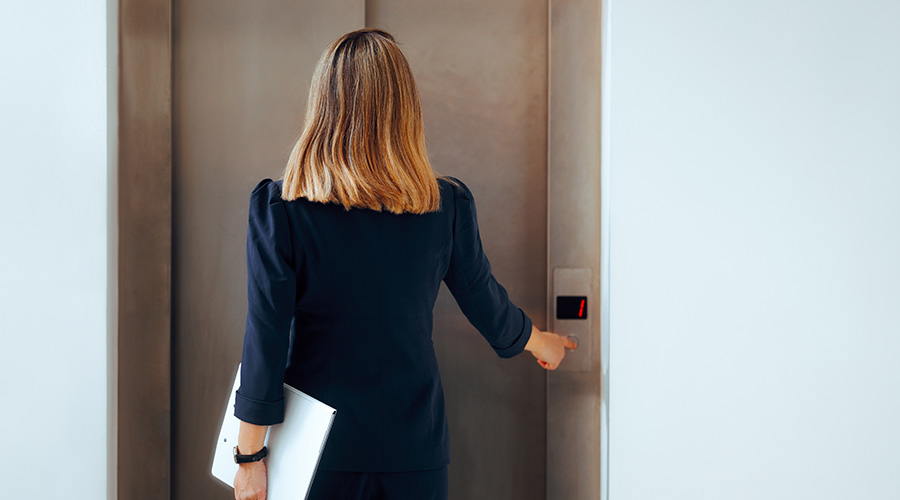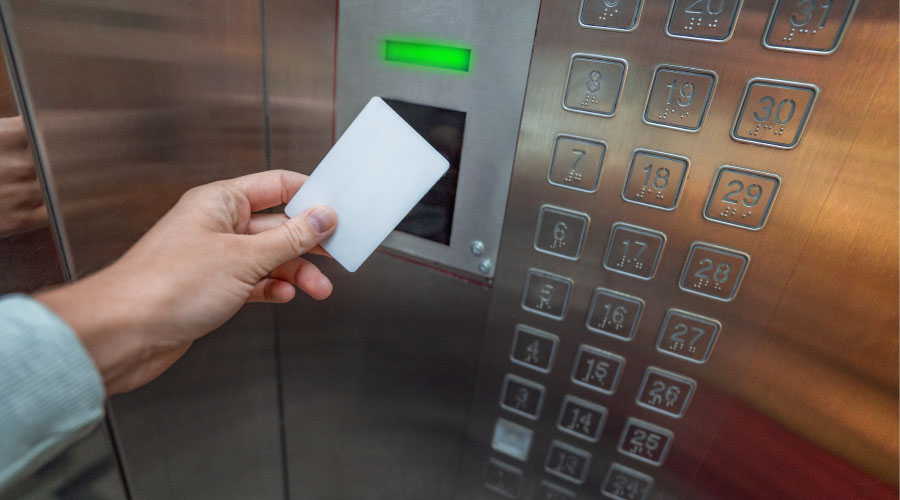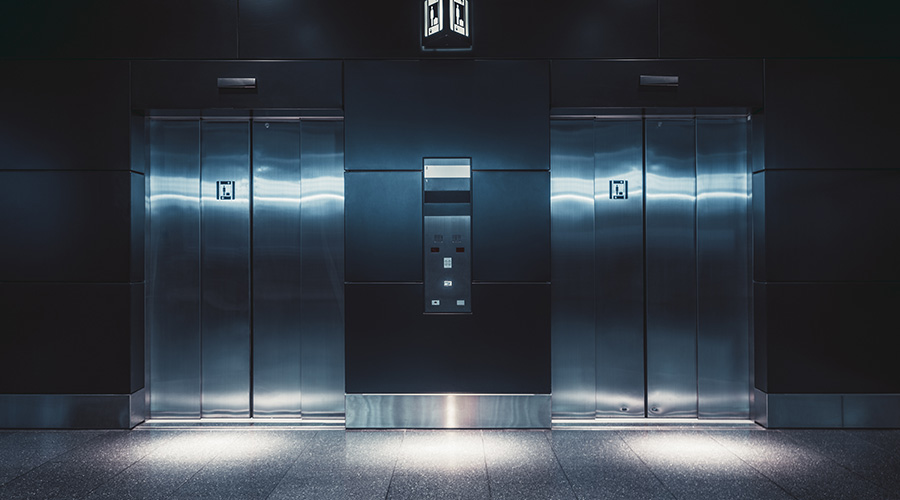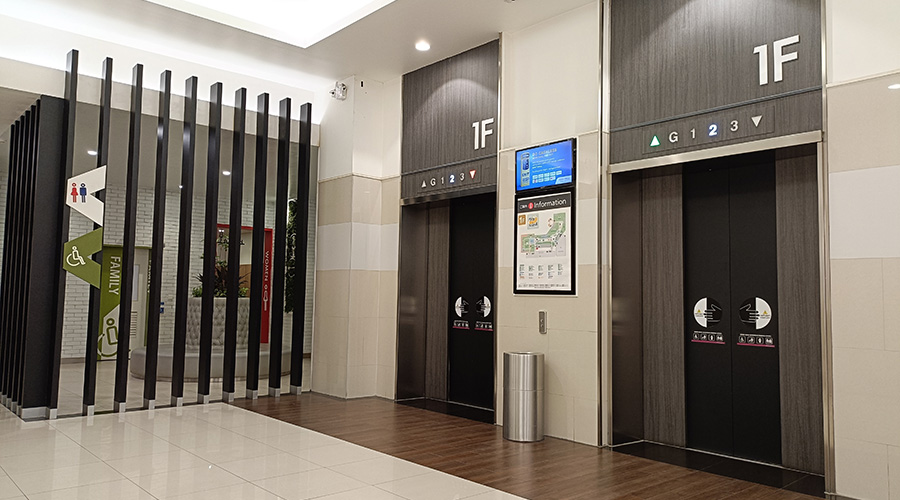Elevator Modernization Can Bring Green Benefits
Of all the benefits of a green building, the one that usually has the biggest impact on the bottom line is energy savings. And when the subject of energy comes up, facility executives typically think of lighting, HVAC, the building envelope and building automation as prime opportunities.
But what about elevators? The common belief is that elevators don't draw much energy, certainly much less than lighting, for example. That might well be the truth. But in high-rise multitenant buildings where the HVAC and lighting systems are submetered and paid for by tenants, elevators can become the building owners' biggest energy expense.
"We have buildings in Chicago that have old technology — going back to the late 1980s," says Rick Lockridge, director of business development for Fujitec. "They have not been modernized and energy use by the elevators is clearly the top energy draw in the building."
Opportunities to save energy are one reason elevator companies are pushing to make their products more environmentally responsible. Those efforts start with energy efficiency, but they don't stop there.
Elevators have an extraordinarily long lifespan when compared to other products like lighting or even roofing. As a result, many elevator manufacturers offer modernization programs for older systems to boost energy efficiency.
These retrofits generally replace older motors and associated drives with newer systems that cut energy use in two ways: They use less electricity during operation, and they generate less heat, which reduces HVAC demands for the hoistway machine room.
Although regenerative drives are the norm on modern systems, they can also be retrofitted to many older systems. Much as hybrid vehicles translate braking force into useable energy, regen units feed energy back into the building system. They work most effectively during ascent with light passenger loads, and during descent with heavy in-cab loads. The braking action against the counterweight during ascent, and against the loaded cab during descent, is fed back into the building to power other systems.
Estimates of how much power they provide (when compared to the system before modernization) range, but regenerative drives improve the efficiency of existing systems an average of 40 percent, according to Steve Snedegar, senior manager of service sales and marketing for Otis Elevators.
Aside from regenerative drives, other drive systems are available that save energy costs — albeit without generating electricity for building use: "Alternating-current variable-frequency drives consume less energy and operate cleaner than traditional DC drive systems," says Kathy Rucki, corporate communications manager for Schindler Elevators. "New DC inverter drive systems can also save 45 percent more energy than old systems."
Companies are also replacing in-cab lighting to be more energy efficient, retrofitting older incandescent bulbs and illuminated call buttons with money-saving LED units.
But companies are also going a step further, using a relatively simple retrofit that "hibernates" — as Schindler's Rucki puts it — the cabs when they're not in use. The system shuts off lighting and fans when the elevator is not in use, effectively throttling back energy use. When building occupants call an elevator, the idling cab will restart light and fan systems.
"The Swiss government did a study on elevators," says Sasha Bailey, corporate sustainability manager for ThyssenKrupp Elevators. "They learned that the biggest efficiency impact is possible when elevators are not being used. Having lights on for 24 hours a day for 30 years really adds up, so automatically shutting down lights and fans can save a lot of energy."
According to Kellie Lindquist, marketing manager at KONE, retrofitting cabs with fan- and light-saving standby modes can provide savings of up to 350 kwh/year, depending upon elevator use.
New Construction
When installing elevators in new construction, many energy-efficient options are already "built-in":
- Machine-room-less elevators use a fraction of the energy and require less ventilation and cooling than older systems with dedicated machine rooms.
- New hoisting technologies also are available. Lindquist says that permanent magnet synchronous motors can deliver savings of up to 70 percent over a traditional hydraulic elevator, and up to 50 percent over a traditional traction elevator.
- Regenerative drives come standard.
- Elevator companies also have borrowed soft-start technology for modern elevators to power variable-frequency drives and significantly reduce energy costs related to elevator operation.
- Microprocessor-controlled units replace bulkier, energy-consuming mechanical relays.
Existing Systems
Other green options can be introduced to older systems. One example is the use of biodegradeable oils in a hydraulic system.
The replacement of petroleum-based fluids with vegetable-based oils helps avoid potential ground contamination and meets the low-acute toxicity criteria of the U.S. Fish and Wildlife Service and the U.S. EPA.
Replacing older motor-generator drives with modern drives not only reduces energy, but also improves indoor air quality.
"Older systems can use a carbon drive, which meant that particulates of carbon can be in the building," says ThyssenKrupp's Bailey. "By switching, you can improve the indoor air quality."
Replacing an entire elevator system is a capital expenditure many organizations simply cannot afford at the moment. But retrofits that significantly shave energy costs and improve indoor air quality can be a boon to the balance sheet. From motor and drive retrofits to replacement of incandescent lighting with LEDs, there is a spectrum of cost-saving modernizations available for aging elevator systems. If a simple cab refurbishment is needed, environmentally responsible choices for paneling, carpeting and paint increasingly are available.
Loren Snyder, a contributing editor for Building Operating Management
, is a writer who specializes in facility issues. He was formerly managing editor of Building Operating Management
.
Related Topics:













